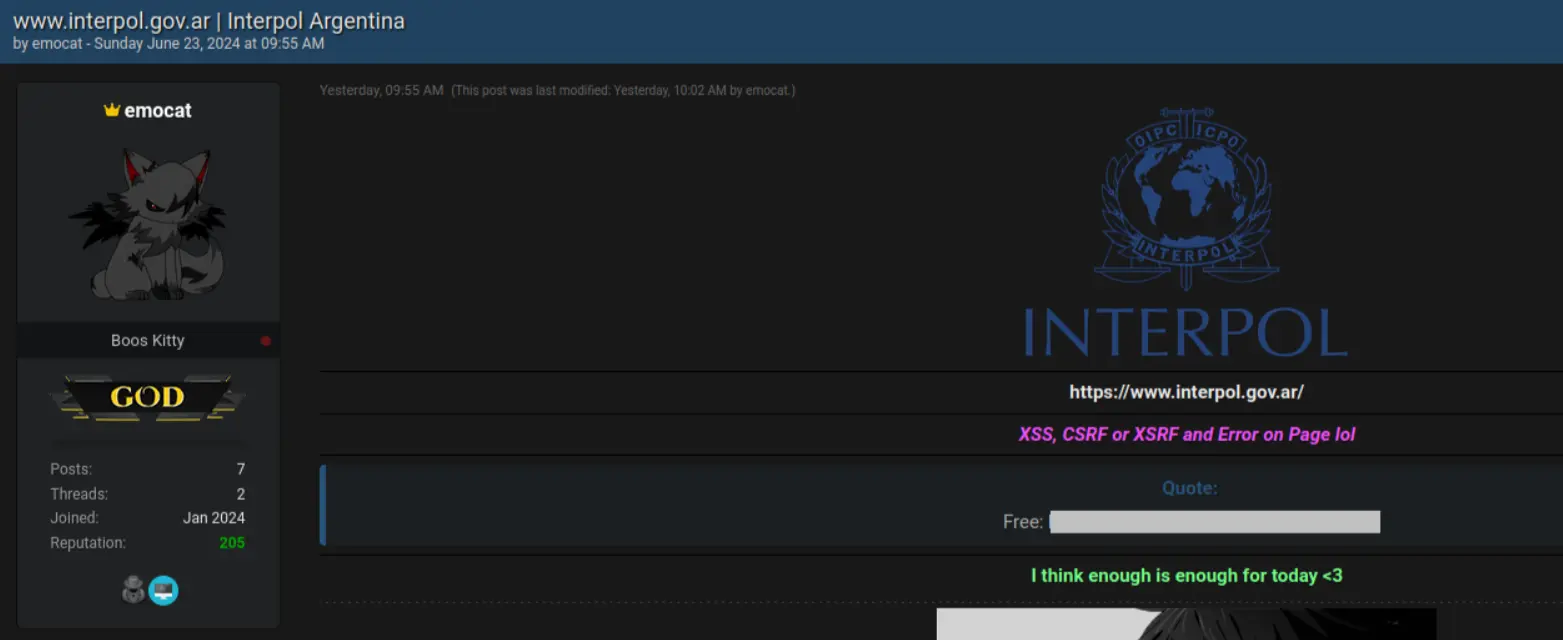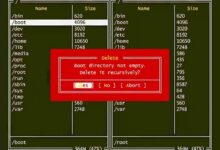NCB Buenos Aires Faces Alleged XSS And CSRF Vulnerabilities

The disclosure has raised concerns within the governmental and law enforcement sectors, affecting not only Interpol but also Argentina's broader cybersecurity landscape.
Ashish Khaitan June 25th, 2024

Share on LinkedInShare on Twitter
The National Central Bureau (NCB) Buenos Aires, a vital division of Interpol in Argentina, has been listed by a dark web actor, claiming to leak methods to exploit XSS and CSRF vulnerabilities in the domain of the Argentine Division of Interpol.
The alleged leak came to light when a threat actor known as “emocat” posted on BreachForums detailing techniques to exploit these vulnerabilities within the domain. The threat actor also shared a URL hinting at a potential error message on the affected web page.
XSS and CSRF Vulnerabilities Targeting Interpol in Argentina
The disclosure has raised concerns within the governmental and law enforcement sectors, affecting not only Interpol but also Argentina’s broader cybersecurity landscape.
Despite Emocat’s claims, there is currently no confirmed evidence of active exploitation on the NCB Buenos Aires website, interpol.gov.ar.
As of now, the website remains operational without visible signs of compromise, suggesting that the vulnerabilities disclosed have not yet been exploited.

Source: Dark Web
The Cyber Express has reached out to the National Central Bureau (NCB) Buenos Aires to learn more about this leak of XSS and CSRF vulnerabilities or any confirmation of active exploitation. However, at the time of writing this, no official statement or response has been received, leaving the claims for this exploitation of XSS and CSRF vulnerabilities to stand unverified.
This lack of official confirmation highlights the uncertain nature of the current threat status regarding Interpol’s operations in Buenos Aires.
What are XSS and CSRF Vulnerabilities?
XSS (Cross-Site Scripting) and CSRF (Cross-Site Request Forgery) are critical security vulnerabilities that pose significant risks to web applications and user data. XSS involves attackers injecting malicious scripts, typically JavaScript, into web pages viewed by other users.
These scripts execute in the victim’s browser context, allowing attackers to steal sensitive information, hijack sessions, modify page content, or redirect users to malicious sites. XSS vulnerabilities come in several forms: reflected, where the script is part of the request URL and reflected in the response; stored, where the script is permanently stored on the server and executed whenever the affected page is accessed; and DOM-based, where the attack occurs within the client-side script itself.
In contrast, CSRF exploits the trust that a web application has in a user’s browser after authentication. Attackers trick users into unwittingly performing actions on a trusted site where they are authenticated. This is achieved by crafting a malicious request that appears legitimate to the application but originates from a different site visited by the victim. CSRF attacks can lead to unauthorized actions such as changing account settings, making purchases, or transferring funds without the victim’s knowledge.





